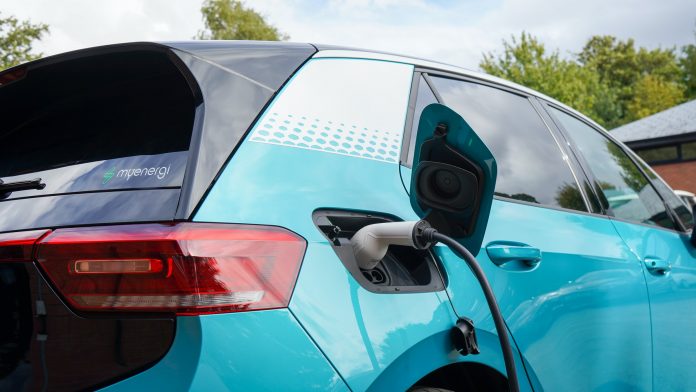With electric vehicle (EV) chargers set to become mandatory on all new build properties from 2022, we spoke to Jordan Brompton, co-founder and CMO of myenergi, to find out more
In line with the government’s roadmap to ban the sale of all new petrol and diesel vehicles from 2030, next year will see legislation introduced mandating the installation of EV charge points in all new build properties across the UK. Transport minister Rachel Maclean believes that this will prove a defining moment in the race to electrification, putting the UK far ahead of the rest of the world.
Alongside public chargers, home and office chargers are essential to our national EV infrastructure. With more drivers than ever before switching to electric, this legislation couldn’t have come at a better time. Indeed, last year, despite the impact of Brexit and the pandemic, the UK saw a 140% increase in EV sales – momentum that is only set to continue.
Understanding the new legislation
One of the most significant challenges for the construction sector will be understanding the idiosyncrasies of the new legislation and specifying EV chargers that are perfectly suited to home and office installation. Equally, the threat of cheap, inefficient and potentially hazardous chargers flooding the market raises questions about implementation.
Fortunately, the transport minister has highlighted that only ‘smart’ models will be approved for installation. Essentially, this means that the device can ‘talk’ to the car and adjust charging to meet user requirements, while minimising the risk of overloading the electricity grid – a concern often raised regarding the viability of widespread EV adoption.
While this guidance will help to prevent the installation of unsuitable units, much more detail will need to be included within the policy’s implementation. The government must ensure that homebuilders and commercial developers – as well as relevant contractors – understand which of the available chargers are suitable for use and will successfully fulfil the requirements of new and future owners and tenants. Fundamentally, there should be an evaluation looking at build quality, ease of installation, safety and how ‘future proof’ the charger is.
As an example, zappi – our eco-smart EV charger, has already proven its suitability and longevity. Installed in thousands of properties worldwide, it has a proven track record. Alongside standard charging modes, it is the first device on the market capable of harnessing power from renewable energy micro-generation technologies, like PV panels and small-scale wind turbines. With many homeowners investing in micro-generation and businesses looking to decarbonise, this could be a critical steppingstone to net zero.
Another implication is cost. If zappi users are using only their solar or wind generation, then they are effectively recharging for free. Not only is this better for the environment, but this self-generated green charging is also minimising the load on the electricity grid. With the popularity of eco-homes and energy-efficient building design on the rise, switchable renewable energy chargers offer an important advantage.
A positive impact on EV adoption in the UK
It is distinctions like this that should encourage the government to take all the guesswork out of charger selection for the building and construction industry. The market for home chargers has grown significantly over the past few years, with a whole host of innovative new products launched – some good, others less so.
This is not a burden that should be placed on the construction sector. Rather than another headache, a list of approved devices would go a long way in aiding the legislation and result in much more effective implementation, providing the intended outcome for home and business owners. The last thing a new owner or tenant needs is to replace a charger shortly after moving in due to obsolescence.
While there are certainly challenges, this is, fundamentally, a crucial step in the right direction for the UK’s transition to electrification. It aligns with automotive market trends and technology development, as well as growing public concern over climate change. Bold and interesting new policies like this will have a hugely positive impact on EV adoption in the UK, but implementation is key.
We need to ensure that the construction industry has a quick and simple way to determine whether or not a particular device is fit-for-purpose. Let’s get this right from the beginning and avoid taking one step forward and two steps backwards.


















As helpful as this is, an EV Charger that allows you to make use of the car battery as a store and then releasing this back to the house to use in peak times would be much more useful, and allow the V2G and V2H process to start building extra resilience into the grid.